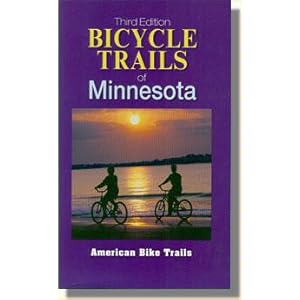Similar to life in general, sometimes the most memorable workouts are ones that come about spontaneously without warning.
I wound up going for a fairly lengthy bike ride yesterday. I didn't plan for it. My initial intent was to bike over to the YMCA, get a solid hour of weightlifting in and run 5 miles on the treadmill. I figured I needed to start ramping up my mileage and getting back into running shape if I'm going to run the Mankato Half Marathon in October. Exercise is still a regular occurrence for me, but running has been sporadic since Grandma's Marathon in June.
As I was biking over to the Y, I randomly decided to hop on the Red Jacket Trail for a bit. Maybe I was tired of being cooped up in my apartment, but I figured a warm up bike ride couldn't hurt. Plus it was a beautiful day outside with little humidity and (more importantly) no wind. "Days like this weren't meant to be wasted in a gym," I told myself.
Once I biked past Mount Kato and reached the Red Jacket/South Route trail crossroads (where Highways 66 and 90 intersect), I opted to take a right and hop on the South Route Trail. I figured I haven't biked that way in awhile and it'd be cool to sneak a quick peak at Minneopa Falls. "You always bike on the Red Jacket Trail," I told myself. "You might as well do something different."
After arriving at Minneopa, I took my time to walk around the park, check out a few hiking trails and take a good, long look at the falls (sorry, no pictures, didn't plan on it so I forgot my camera). I hopped on my bike with every intention of taking the South Bend Trail back to the Y, but on my way out of the park, I saw signs for the Minneopa bike trail.
Like other Mankato cyclists, I vaguely remember hearing about the Minneopa trail through an
article in the Free Press last fall. The trail was due to be completed this summer, but aside from a grand opening event planned for it on the
Mankato Multisport Club's website, I hadn't really heard anything about it. Truth be told, I actually forgot about it. As my bike trip destination blog entries would indicate, it's not like there was a shortage of places for me to bike to this summer.
But since I was already at the falls, curiosity took over and I decided to hop on the trail and see how far it went. To my surprise and enjoyment, the trail is indeed complete, taking bikers all the way from Minneopa Park across the Blue Earth River into Sibley Park. It must have just recently been finished, as there's no information available about it on the web, nor does it even show up on Google Maps or mapmyrun.com.
The trail passes under a railroad and the access road into Land of Memories Park, making it a non-stop ride with no traffic to worry about. It also offers quite a few charming views of the Minnesota River valley as riders make their way into Mankato.
This was a pretty sizable undertaking for the parks department. The September Free Press article said the trail was a project 10 years in the making and its cost wound up being upwards of $1.4 million.
However, I'm sure I speak for all biking enthusiasts when I say that the hardships endured to build it are greatly appreciated. It's another beautiful trail to enjoy year-round and it creates an easier transportation pipeline to one of Mankato's greatest natural attractions.
I was critical of using bike trails to get to the falls area when
I wrote about it in June because the South Route Trail took a meandering route to get there. Well, there's no more meandering to worry about anymore.
In a grander scheme, the Minneopa trail also creates a much more convenient transportation loop for any cyclist who wants to explore the Mankato area. It links directly to the South Route Trail, which in turn connects with the Red Jacket Trail. On the other end of it, after biking through Sibley Park, it also hooks up with the Minnesota River Trail, which eventually links to the Sakatah Singing Hills Trail.
Here is a visual of all the trails in Mankato, sans Minneopa.
If you're keeping track, that's nearly 80 miles of linked trail that provides bike access to the following attractions: MSU campus, Rapidam Dam, Minneopa Falls, Seppman Mill, Mount Kato, Riverfront Park's concert area, the disc golf course at Land of Memories Park, a petting zoo in Sibley Park, the Old Town area in Mankato, and a historic high trestle railroad bridge. That's in addition to everything the 39-mile stretch of trail between Mankato and Faribault has to offer.
That's a lot of sights to see and a lot of pedaling to do.




















 After a week of biking, tent camping and more biking, my RAGBRAI adventure has finally come to a close.
After a week of biking, tent camping and more biking, my RAGBRAI adventure has finally come to a close.

